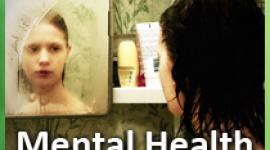ADHD and SAD’s Surprising Connection and What to Do About It
Here's what's happening on the HealthyPlace site this week:
- ADHD and SAD’s Surprising Connection and What to Do About It
- From the HealthyPlace Mental Health Blogs
- Video: Understanding Bipolar Disorder: 5 Things You Should Know
- Most Popular HealthyPlace Articles Shared by Facebook Fans
- Mental Health Quote

ADHD and SAD’s Surprising Connection and What to Do About It
It might seem like an unlikely combination. Attention deficit/hyperactivity disorder (ADHD) and seasonal affective disorder (SAD; also called seasonal depression) often co-occur. Research suggests that SAD may affect people with ADHD at a higher rate than those without ADHD. Some psychiatrists unofficially report that most of their clients with ADHD experience SAD. This connection holds true for general depression as well: Estimates indicate that depression is almost three times more prevalent in adults with ADHD than without it1.
The ADHD-SAD correlation makes more sense upon knowing that they share several key components:
- Genetics (overlap in genes that contribute to both disorders)
- Neurochemistry (including the increased production of melatonin in winter months, which can contribute to depression and makes ADHD harder to live with)
- Internalization of problems (guilt, self-blame, low self-esteem, negative thinking)
According to author and Senior Certified ADHD coach Jennifer Koretsky2, “The neurological systems of people with ADHD appear to be highly sensitive. We are especially sensitive to change and transitions. So it’s easy to see how a change in duration and intensity of sunlight is sure to have an effect, as is colder weather.”
If you live with ADHD and experience SAD, you’re not doomed to months of misery. These tips can help:
- Treat both conditions
- Exercise to balance hyperactivity and lack of energy
- Medication
- Eat well
- Light therapy
- Limit alcohol
- Find support
- See a therapist
- Know that this is temporary
Sources:
- Yagoda, M. (2013). “I live with both ADHD and depression". ADDitude Magazine. Retrieved November 2018 from https://add.org/beat-the-blues-how-adults-with-adhd-can-recognize-and-treat-seasonal-affective-disorder-sad/
- Koretsky, J. (2015). Beat the Blues! How Adults with ADHD Can Recognize and Treat Seasonal Affective Disorder (SAD). attention deficit disorder association (ADDA). Retrieved November 2017 from https://add.org/beat-the-blues-how-adults-with-adhd-can-recognize-and-treat-seasonal-affective-disorder-sad/
- ADDitude Editors. (n.d.). What to do if winter weather makes you sad. ADDitude Magazine. Retrieved November 2018 from https://www.additudemag.com/seasonal-affective-disorder-adhd-comorbid-depression/
Related Articles Dealing with ADHD, SAD
- ADHD and Transitions: Change is Tough; How to Deal with It
- Video on Adult ADHD and Depression
- Seasonal Affective Disorder (SAD) Symptoms — Who’s at Risk?
- SAD Light: Seasonal Depression Light Therapy for SAD
- How to Beat the Winter Blues
Your Thoughts
Today's Question: : If you live with ADHD and SAD, what has the combination been like for you? We invite you to participate by sharing your thoughts, knowledge, and experiences on the HealthyPlace Facebook page and on the HealthyPlace Google+ page.
From the HealthyPlace Mental Health Blogs
On all our blogs, your comments and observations are welcomed.
- Bipolar Advocacy: How to Become a Bipolar Advocate?
- Three Ways to Reduce Anxiety Quickly (In Under 3 Minutes)
- Is My Emotional Crutch My Psychiatric Medication?
- Starting a New Job with ADHD
- Being in Awe Can Lead to Better Mental Health
- Living with Schizoaffective Symptoms for 20 Years
- Anxiety's Yin and Yang: Live the Balance, Be At Peace
- How to Deal with a Crisis When You Have Depression
- The Joy of Hygge: Practice Self-Care Like a Scandinavian
- Immediate Coping Mechanisms for Self-Harm
- 5 Warning Signs of an Exercise Addiction
- 5 Signs of Low Self-Esteem
Feel free to share your thoughts and comments at the bottom of any blog post. And visit the mental health blogs homepage for the latest posts.
------------------------------------------------------------------
From HealthyPlace YouTube Channel
I'm Hannah. I Have Bipolar 2
Understanding Bipolar Disorder: 5 Things You Should Know
In this video, I share five things I want people with bipolar disorder to know and understand. (Watch Hannah and subscribe to the HealthyPlace YouTube channel for more great mental health videos.)
------------------------------------------------------------------
Most Popular HealthyPlace Articles Shared by Facebook Fans
Here are the top 3 mental health articles HealthyPlace Facebook fans are recommending you read:
- How Online Arguments with Strangers Affect Your Happiness
- Getting Through the Anniversary of the Death of a Loved One
- 10 Tips on How to Accomplish Big Goals with Bipolar Disorder
If you're not already, I hope you'll join us/like us on Facebook too. There are a lot of wonderful, supportive people there.
------------------------------------------------------------------
Mental Health Quote
"Anxiety happens when you think you have to figure out everything all at once. Breathe. You’re strong. You got this. Take it day by day."
Read more anxiety quotes.
------------------------------------------------------------------
That's it for now. If you know of anyone who can benefit from this newsletter or the HealthyPlace.com site, I hope you'll pass this onto them. You can also share the newsletter on any social network (like facebook, stumbleupon, or google+) you belong to by clicking the links below. For updates throughout the week, circle HealthyPlace on Google+, follow HealthyPlace on Twitter or become a fan of HealthyPlace on Facebook. Also, check out HealthyPlace on Pinterest and share your mental health pins on our Share Your Mental Health Experiences board.
APA Reference
Peterson, T.
(2018, December 3). ADHD and SAD’s Surprising Connection and What to Do About It, HealthyPlace. Retrieved
on 2026, January 3 from https://www.healthyplace.com/other-info/mental-health-newsletter/adhd-and-sads-surprising-connection-and-what-to-do-about-it



